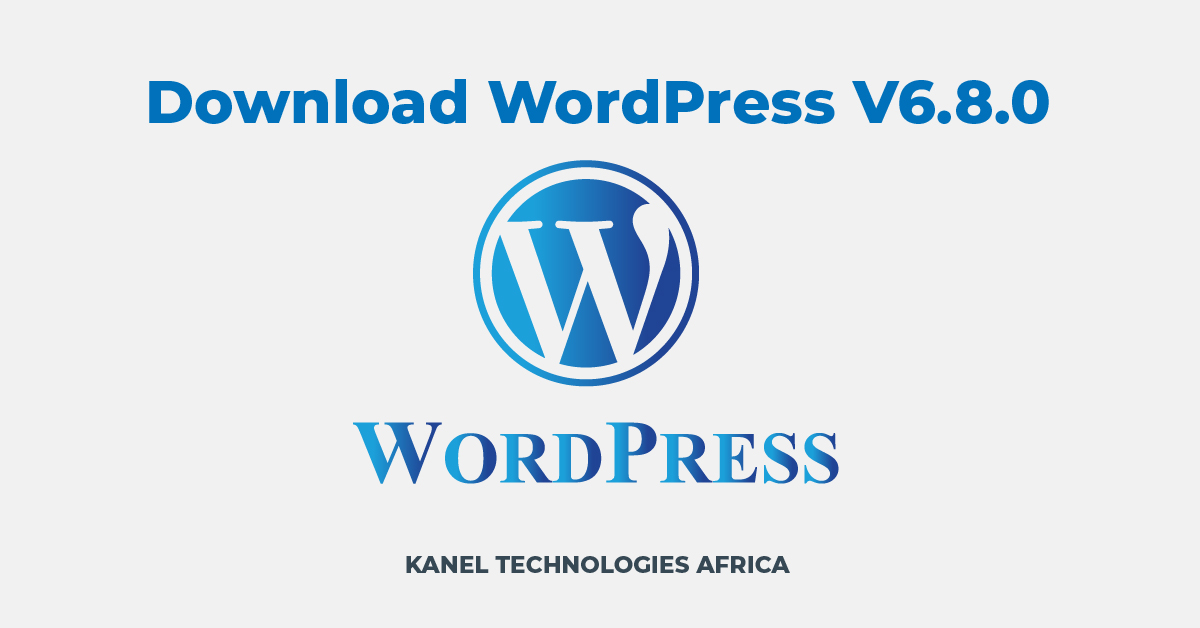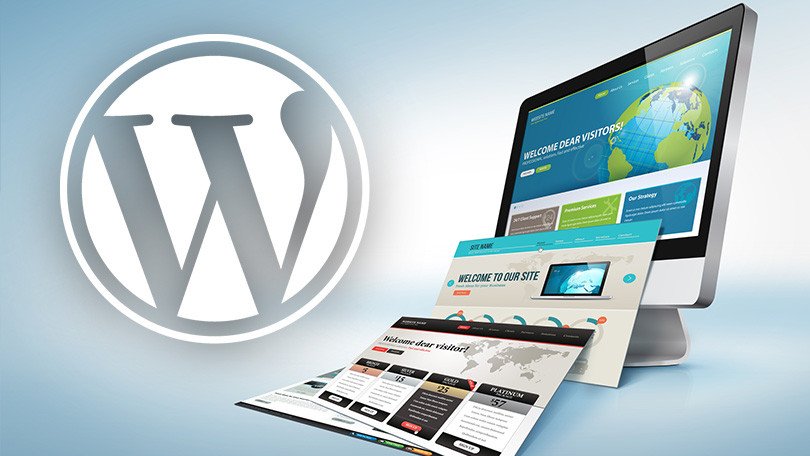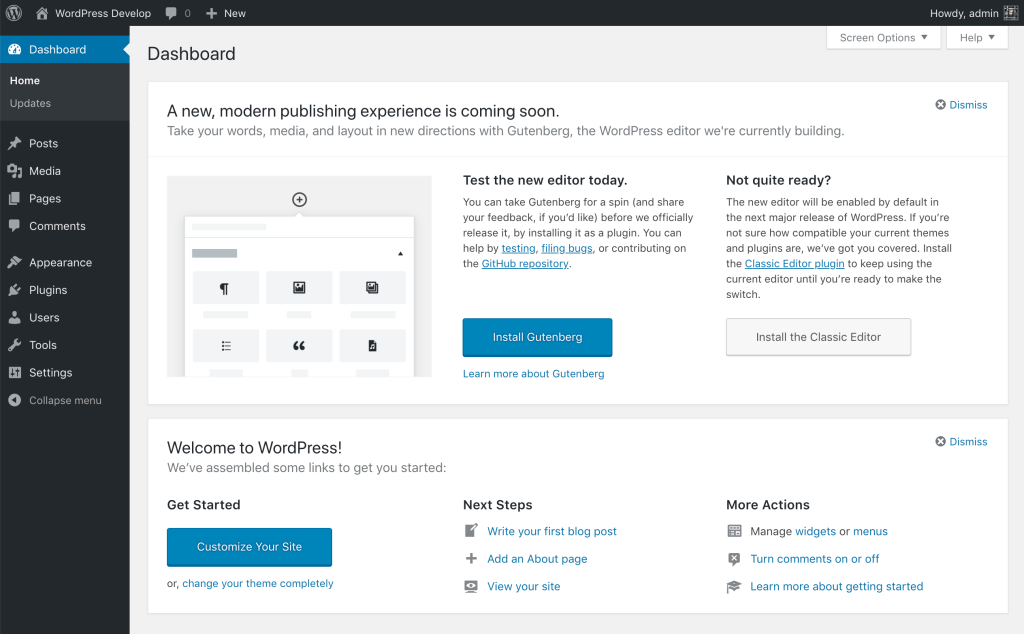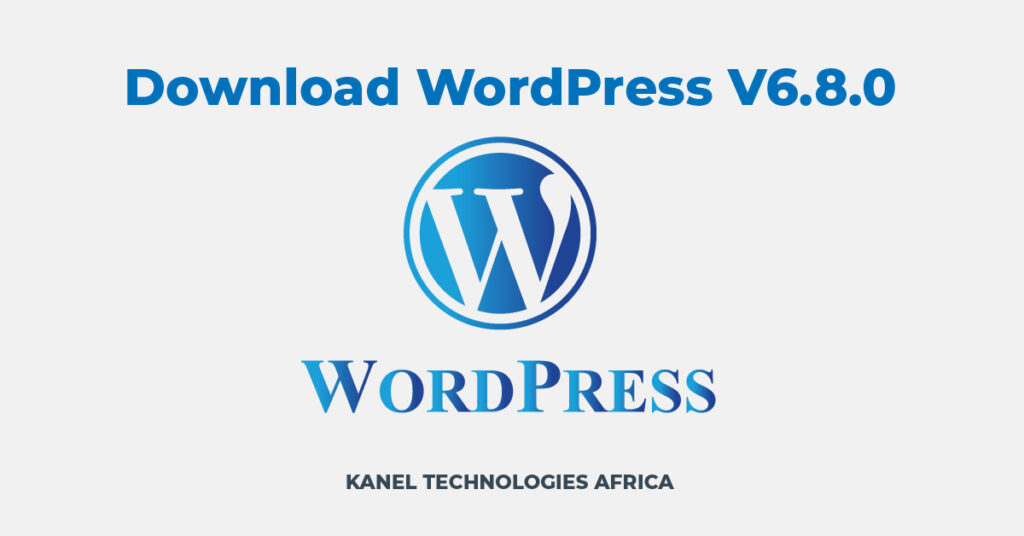
WordPress 6.8.0 introduces groundbreaking site editing tools, performance enhancements, and AI integration. Explore transformative features in this major release.
Download WordPress Version 6.8.0

The WordPress community celebrates the arrival of version 6.8.0, a landmark release that fundamentally transforms how users create, manage, and experience websites on the world’s most popular content management system. This major version update represents months of dedicated development, community collaboration, and innovative thinking that pushes the boundaries of what’s possible with open-source software. Unlike maintenance releases that focus primarily on security and stability, WordPress 6.8.0 introduces substantial new features, architectural improvements, and interface enhancements that will reshape workflows for millions of users across the globe.
The Vision Behind WordPress 6.8.0
WordPress 6.8.0 arrives as a pivotal milestone in the platform’s ongoing evolution toward full site editing capabilities and enhanced user experience. This release continues the ambitious Gutenberg project’s trajectory, bringing maturity to the block-based editing paradigm while introducing entirely new possibilities for creative expression and site customization. The development team’s vision centers on democratizing web design and development, making sophisticated website creation accessible to users regardless of their technical expertise while simultaneously empowering developers with powerful tools and APIs.
The philosophy underpinning 6.8.0 emphasizes the elimination of barriers between different aspects of website management. Traditional divisions between content creation, design customization, and site structure have been deliberately blurred, enabling users to work more holistically and intuitively. This integrated approach reflects evolving expectations about how modern content management systems should function in an era where the boundaries between developers, designers, and content creators continue to fade.
Revolutionary Site Editor Enhancements
The site editor receives its most significant upgrade since inception, with WordPress 6.8.0 introducing features that fundamentally change how users approach website design. The new Style Variations system allows users to create and switch between complete design systems with a single click, encompassing typography, colors, spacing, and layout preferences. These variations go beyond simple theme options, representing comprehensive design languages that maintain consistency across every element of your website.
Users can now create custom variations that capture their brand identity perfectly, save them for reuse across multiple projects, and even share them with the broader WordPress community. This functionality democratizes professional design capabilities, enabling small business owners and individual creators to achieve sophisticated visual coherence that previously required extensive design knowledge or professional assistance.
The template and template parts system has been completely reimagined, offering unprecedented flexibility in how page layouts are constructed and reused. WordPress 6.8.0 introduces conditional template loading based on sophisticated criteria including post metadata, user roles, time-based conditions, and custom taxonomies. This powerful system enables dynamic site experiences that adapt to context without requiring custom PHP code or complex plugin configurations.
Pattern management reaches new heights with the introduction of pattern categories, search functionality, and a redesigned pattern inserter that makes discovering and implementing design elements intuitive and efficient. The pattern library now includes hundreds of professionally designed options spanning various industries and use cases, from portfolio layouts and testimonial displays to pricing tables and call-to-action sections. Users can mix and match these patterns, customize them extensively, and save their creations as reusable patterns available across their site.
Advanced Block System Capabilities
The block editor, WordPress’s core content creation interface, receives substantial enhancements that expand creative possibilities while simplifying common tasks. New block types introduced in 6.8.0 include an Advanced Gallery block with masonry layouts and lightbox functionality, a Timeline block perfect for storytelling and process visualization, an Interactive Map block with marker customization and route planning, and a Comparison Slider block ideal for before-and-after presentations.
Existing blocks benefit from significant capability expansions. The Image block now supports advanced filters, adjustment layers, and focal point selection directly within the editor, eliminating the need for external image editing tools for basic modifications. The Table block gains cell merging, custom cell backgrounds, and responsive behavior controls that ensure data displays appropriately across all device sizes. The Navigation block introduces mega menu support, icon integration, and conditional visibility rules that enable sophisticated site navigation structures.
Block binding functionality represents a groundbreaking innovation that connects blocks to dynamic data sources. This feature enables blocks to display content from custom fields, post metadata, user information, and even external APIs without requiring custom code. Content editors can create sophisticated data-driven layouts using familiar visual tools, while developers gain powerful new options for building complex applications on WordPress foundations.
The block locking system has been refined to offer granular control over what users can modify, move, or remove. Site administrators can now lock specific block attributes while leaving others editable, create locked templates that maintain design integrity while allowing content updates, and establish different permission levels for various user roles. This system proves invaluable for agencies managing client sites, enterprises maintaining brand consistency, and educational institutions controlling student-created content.
Performance Revolution Through Technical Innovation
WordPress 6.8.0 introduces dramatic performance improvements that benefit every website regardless of size, complexity, or hosting environment. The development team conducted extensive profiling and optimization work, identifying and addressing performance bottlenecks throughout the codebase. These improvements manifest in faster page loads, reduced server resource consumption, and improved responsiveness during editing sessions.
Lazy loading implementation has been extended beyond images to encompass embedded content, scripts, and stylesheets. This progressive loading approach ensures that users receive critical content immediately while deferring less essential elements until needed, dramatically improving perceived performance and Core Web Vitals scores. The system intelligently prioritizes content based on viewport position and user interaction patterns, creating optimal loading sequences automatically.
Database query optimization reaches new levels of sophistication with smart caching, query result memoization, and improved indexing strategies. Complex queries that previously required multiple database round trips now complete in single optimized calls. For websites with extensive content libraries or complex taxonomies, these improvements translate to substantial performance gains, particularly on archive pages, search results, and filtered views.
Asset loading has been completely reimagined with the introduction of module-based JavaScript loading, dependency optimization, and intelligent code splitting. JavaScript files load only when needed, reducing initial page weight and improving time-to-interactive metrics. CSS delivery has been optimized with automatic critical CSS extraction and inline critical path styling, ensuring above-the-fold content renders immediately without waiting for full stylesheet downloads.
Artificial Intelligence Integration and Content Enhancement
WordPress 6.8.0 marks the platform’s entry into the AI-assisted content creation era with thoughtful, privacy-respecting integrations that enhance rather than replace human creativity. The new AI Writing Assistant provides contextual suggestions for improving readability, suggests alternative phrasings for clarity, and helps maintain consistent tone throughout content. Unlike cloud-based AI tools that send your content to external servers, WordPress’s implementation respects user privacy while delivering valuable assistance.
Image generation capabilities enable users to create custom illustrations, backgrounds, and decorative elements directly within the media library. The system generates images based on text descriptions, offering multiple variations and allowing iterative refinement until the desired result is achieved. This functionality proves particularly valuable for content creators who need visual elements but lack access to stock photography subscriptions or graphic design resources.
The AI-powered content analysis tool examines posts and pages, providing actionable recommendations for SEO optimization, accessibility improvements, and engagement enhancement. The system identifies opportunities to improve heading structure, suggests internal linking possibilities, highlights potential readability issues, and recommends content expansions based on topic comprehensiveness analysis. These suggestions empower content creators to produce higher-quality material that serves both users and search engines effectively.
Enhanced Collaboration and Workflow Management
Recognition that website creation is increasingly collaborative drives significant improvements to WordPress’s multi-user capabilities in version 6.8.0. The new collaborative editing features enable multiple users to work on the same content simultaneously, with real-time presence indicators showing who’s currently editing and change highlighting that prevents conflicting modifications. This Google Docs-style collaboration transforms WordPress into a true team platform suitable for newsrooms, content agencies, and distributed teams.
The revision system receives a comprehensive overhaul with named revisions, branching capabilities, and visual diff viewing. Users can create checkpoints before making significant changes, experiment with alternative approaches in separate branches, and merge changes systematically. The visual diff viewer makes it easy to understand exactly what changed between versions, facilitating review processes and enabling confident restoration of previous states when needed.
Workflow automation introduces customizable content approval processes that route posts through defined stages before publication. Administrators can configure multi-stage review processes, assign reviewers based on content categories or custom criteria, and establish notification systems that keep stakeholders informed of content status. This systematic approach to content governance proves essential for organizations with compliance requirements or quality assurance protocols.
Accessibility Achievements and Inclusive Design
WordPress 6.8.0 represents a major milestone in the project’s ongoing commitment to accessibility, with extensive improvements ensuring that the platform remains usable by people of all abilities. The editor interface achieves WCAG 2.2 Level AA compliance across all core features, with improved keyboard navigation, enhanced screen reader support, and better color contrast throughout.
The new Accessibility Checker analyzes content as you create it, identifying potential issues like missing image alt text, insufficient heading hierarchy, low color contrast, and improper use of semantic HTML. Rather than simply flagging problems, the tool provides contextual education about why accessibility matters and offers specific guidance for remediation. This proactive approach helps content creators build accessible habits rather than treating accessibility as an afterthought.
Focus management throughout the block editor has been completely reimagined, ensuring that keyboard users can navigate efficiently without getting lost in complex nested structures. The system now provides clear visual focus indicators, logical tab order that respects content structure, and keyboard shortcuts that enable rapid navigation between blocks and editing contexts.
Developer Experience and Extensibility Improvements
WordPress 6.8.0 introduces substantial improvements for developers extending and customizing the platform. The Block API reaches version 3, introducing composition primitives that make creating complex custom blocks significantly easier. Developers can now build sophisticated interactive components using declarative patterns familiar from modern JavaScript frameworks while maintaining full compatibility with WordPress’s data architecture.
The new Component Library provides dozens of pre-built React components that handle common interface patterns like data tables, modal dialogs, dropdowns, and form controls. These components implement WordPress design language and accessibility best practices automatically, enabling developers to create professional interfaces quickly while ensuring consistency with core WordPress aesthetics.
REST API expansion continues with new endpoints for site editor functionality, pattern management, and workflow operations. These APIs enable headless WordPress implementations to leverage all new 6.8.0 features, ensuring that decoupled architectures don’t sacrifice functionality compared to traditional WordPress installations. Authentication improvements and expanded permission controls make the REST API more suitable for powering mobile applications and third-party integrations.
The introduction of WebAssembly support for compute-intensive operations opens new possibilities for sophisticated functionality running entirely in the browser. Image processing, data analysis, and complex calculations can now execute at near-native speeds without server round trips, enabling new categories of web applications built on WordPress foundations.
Security Enhancements and Privacy Protection
While 6.8.0 focuses primarily on features and functionality, security remains paramount with numerous improvements strengthening WordPress’s defensive posture. Enhanced input sanitization throughout the codebase reduces XSS vulnerability surface area. Improved password policies encourage stronger credential creation while two-factor authentication capabilities become more accessible for site administrators concerned about account security.
The new Privacy Dashboard provides comprehensive visibility into data collection, storage, and processing activities. Site administrators can review what information WordPress stores, understand how plugins handle user data, and configure privacy settings granularly. This transparency empowers informed decision-making about privacy tradeoffs and facilitates compliance with regulations like GDPR, CCPA, and emerging data protection frameworks.
Content Security Policy support enables administrators to define strict rules about what resources browsers should load and execute, significantly reducing risks from compromised dependencies or malicious content injection. The system includes preset security profiles for common scenarios while allowing advanced users to craft custom policies matching their specific security requirements.
Mobile Experience and Progressive Web App Capabilities
WordPress 6.8.0 dramatically improves mobile editing experiences, recognizing that content creation increasingly happens on smartphones and tablets. The mobile editor interface has been completely redesigned with touch-first interactions, optimized toolbar layouts, and gesture support that makes block manipulation feel natural on touchscreens. Users can now create and edit sophisticated layouts comfortably from mobile devices without sacrificing capabilities available on desktop.
Progressive Web App (PWA) support becomes a core WordPress feature rather than requiring plugins. Site administrators can enable PWA functionality with simple toggles, automatically generating necessary manifest files and service worker configurations. Visitors can install WordPress sites as standalone applications on their devices, receiving push notifications, accessing content offline, and enjoying app-like experiences without traditional app store distribution.
Comparison: WordPress 6.8.0 vs 6.7.4
| Feature/Aspect | WordPress 6.7.4 | WordPress 6.8.0 |
|---|---|---|
| Release Type | Maintenance Release | Major Feature Release |
| Release Date | April 2025 | June 2025 |
| Site Editor | Standard functionality | Style Variations, Advanced Templates |
| New Block Types | None | 4 new blocks (Gallery, Timeline, Map, Slider) |
| AI Integration | Not available | Writing Assistant, Image Generation |
| Collaboration | Basic multi-user | Real-time collaborative editing |
| Performance | Optimized queries | Revolutionary lazy loading & asset optimization |
| Block System | Existing blocks | Block binding, Advanced locking |
| Mobile Editing | Basic mobile support | Touch-first redesigned interface |
| PWA Support | Plugin required | Core functionality |
| Accessibility | WCAG 2.1 AA | WCAG 2.2 AA with live checker |
| Developer API | Block API v2 | Block API v3 with composition primitives |
| REST API | Standard endpoints | Expanded site editor endpoints |
| Security Features | Standard security | CSP support, Privacy Dashboard |
| Workflow | Basic revision | Named revisions, Branching, Approval processes |
| File Size | 64.4 MB | 68.2 MB |
| PHP Requirements | PHP 7.4 – 8.3 | PHP 8.0 – 8.3 (8.0 minimum) |
| Recommended For | Maintenance update | Major upgrade for new capabilities |

Migration Considerations and Preparation
Upgrading to WordPress 6.8.0 represents a more significant transition than maintenance releases due to the substantial new features and architectural changes. Site owners should approach this upgrade with careful planning, particularly for business-critical websites or those with extensive customizations. Creating comprehensive backups remains essential, but testing in staging environments becomes even more critical for major version updates.
Theme compatibility deserves special attention as the enhanced site editor and block system may interact differently with themes designed for earlier WordPress versions. Block themes benefit most from 6.8.0’s new capabilities, while classic themes may require updates to fully support new features. Contacting theme developers before upgrading helps identify potential compatibility concerns and ensures necessary theme updates are available.
Plugin compatibility assessment should include testing all installed plugins in staging environments before production deployment. While WordPress maintains strong backward compatibility commitments, the significant changes in 6.8.0 may expose compatibility issues in plugins that interact deeply with core functionality. Prioritize updates for plugins that extend the block editor, modify site editor behavior, or integrate with WordPress’s data layer.
For websites currently running WordPress versions significantly older than 6.7.x, a staged upgrade approach may prove prudent. Jumping directly from WordPress 5.x or early 6.x versions to 6.8.0 introduces more potential compatibility issues than incremental updates. Consider upgrading first to 6.7.4, ensuring everything functions correctly, then proceeding to 6.8.0 after verification.
Training and Adoption Strategies
The substantial interface changes and new capabilities in WordPress 6.8.0 necessitate user training for teams accustomed to earlier versions. Organizations should allocate time for administrators, editors, and content creators to familiarize themselves with the new site editor, block enhancements, and collaborative features before expecting full productivity with new capabilities.
WordPress.org provides extensive documentation, video tutorials, and interactive learning modules covering all new 6.8.0 features. These free resources offer excellent starting points for self-directed learning. For organizations requiring more structured training, numerous WordPress education providers offer courses, workshops, and certification programs covering 6.8.0 features comprehensively.
Establishing internal documentation that captures your organization’s specific workflows, customizations, and best practices helps ensure consistent adoption across teams. Document how your organization will leverage style variations, what patterns are approved for use, and how collaborative editing features should be utilized within your content creation processes.
Looking Forward: The Future of WordPress
WordPress 6.8.0 represents a significant milestone but certainly not the conclusion of WordPress evolution. The development roadmap includes continued refinement of site editing capabilities, deeper AI integration respecting privacy and user control, enhanced multilingual support for global content management, and further performance optimization targeting Core Web Vitals excellence.
The Gutenberg project’s remaining phases promise even more transformative capabilities. Phase 4 focuses on native multilingual support enabling seamless content management across languages without plugins. Phase 5 envisions sophisticated workflows, content scheduling, and project management capabilities that position WordPress as a comprehensive digital experience platform rather than simply a content management system.
Community involvement remains central to WordPress’s future, with opportunities for users at all skill levels to contribute ideas, provide feedback, test features, and help shape the platform’s direction. Whether through local meetups, WordCamps, GitHub contributions, or forum participation, every community member can influence WordPress’s evolution.
Conclusion: Embracing WordPress’s Future
WordPress 6.8.0 represents a watershed moment in the platform’s two-decade history, introducing capabilities that fundamentally transform what’s possible with WordPress while maintaining the accessibility and user-friendliness that made it the world’s most popular CMS. The combination of revolutionary site editing tools, AI-enhanced content creation, dramatic performance improvements, and sophisticated collaboration features positions WordPress to meet evolving expectations for modern web platforms.
For existing WordPress users, 6.8.0 offers compelling reasons to upgrade beyond the security and stability benefits of staying current. The new capabilities enable more sophisticated websites, streamlined workflows, and enhanced user experiences that translate directly to business value. The time invested in upgrading and learning new features returns dividends through increased productivity, better content quality, and expanded creative possibilities.
Those new to WordPress or considering content management system options will find 6.8.0 represents the platform at its most capable and user-friendly. The combination of powerful features and intuitive interfaces makes WordPress suitable for projects ranging from personal blogs to enterprise applications, eliminating traditional tradeoffs between ease of use and sophisticated functionality.
Update your WordPress installation to version 6.8.0 and explore the remarkable new capabilities that await. The future of content management has arrived, and it’s more accessible, powerful, and exciting than ever before.


